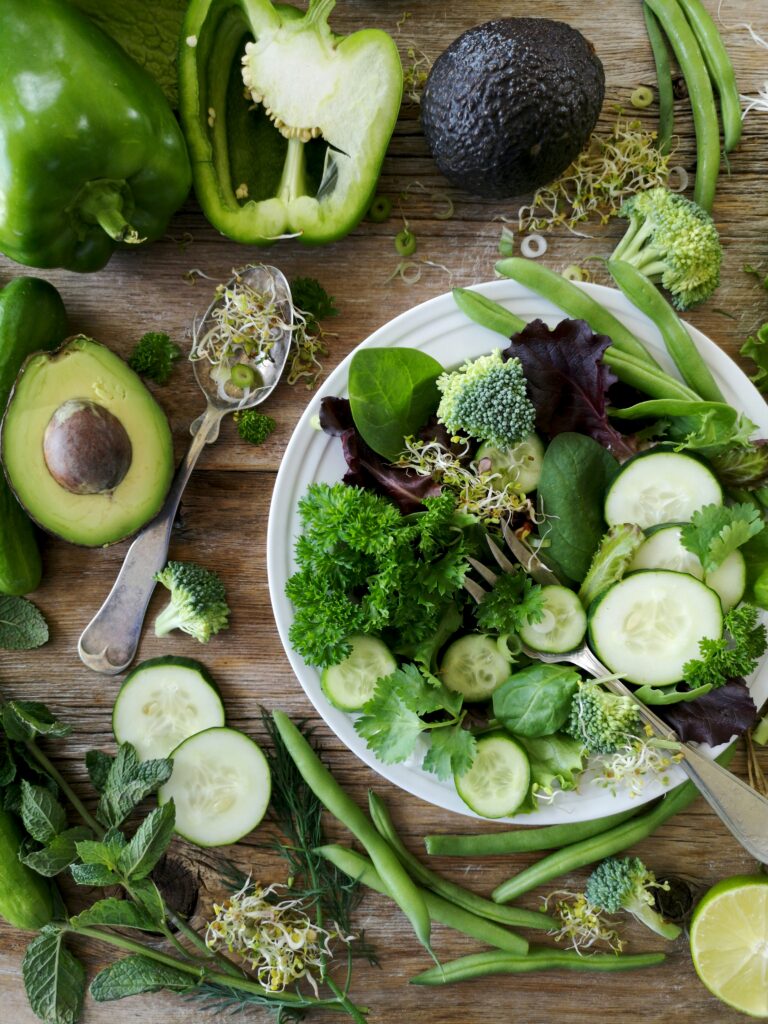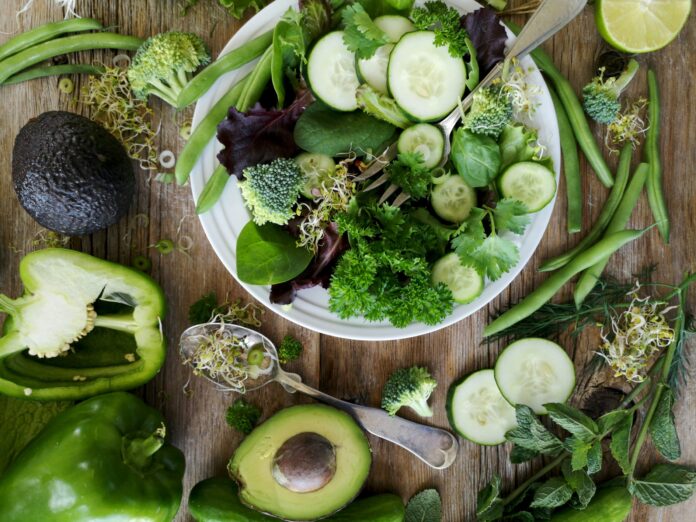The gluten-free diet has gained popularity in recent years, not only for individuals with gluten-related disorders but also among people seeking a healthier lifestyle. A gluten-free diet eliminates all foods containing gluten—a protein found in wheat, barley, rye, and certain processed foods. Whether you need to avoid gluten due to health reasons or are simply interested in exploring its potential benefits, this guide covers the essentials of a gluten-free diet, its benefits, and how to begin.
What is Gluten?
Gluten is a protein found in grains like wheat, barley, and rye. It acts as a binding agent, giving dough its elasticity and helping baked goods maintain their shape. For most people, gluten is harmless, but for some, it can lead to health issues ranging from mild sensitivities to severe conditions such as celiac disease.
Who Should Follow a Gluten-Free Diet?
While gluten is generally safe for most people, those with gluten-related disorders need to avoid it entirely. Here’s a look at who might benefit from a gluten-free diet:
- Celiac Disease: An autoimmune condition where gluten consumption triggers the immune system to attack the small intestine, leading to inflammation and damage. For individuals with celiac disease, avoiding gluten is essential to prevent digestive issues, nutrient deficiencies, and long-term health problems.
- Non-Celiac Gluten Sensitivity: Some people experience symptoms like bloating, fatigue, and headaches after consuming gluten, despite not having celiac disease. For them, a gluten-free diet may help reduce these symptoms.
- Wheat Allergy: People with a wheat allergy can experience allergic reactions, including hives, breathing difficulties, and digestive issues when consuming wheat. A gluten-free diet can help them avoid these reactions.
- People Interested in Health Benefits: Some individuals without gluten sensitivities try a gluten-free diet as a means of eliminating processed foods and improving overall nutrition. However, those without gluten sensitivities should take care to maintain a balanced, nutrient-rich diet.
Health Benefits of a Gluten-Free Diet
A well-balanced gluten-free diet can offer several health benefits, particularly for those who have gluten-related disorders. Here are some advantages:
- Improved Digestive Health
For people with celiac disease or gluten sensitivity, avoiding gluten can alleviate digestive symptoms such as bloating, gas, diarrhea, and constipation. Removing gluten can help reduce inflammation in the gut, promoting better digestion and absorption of nutrients. - Increased Energy Levels
People with celiac disease or gluten sensitivity often experience chronic fatigue due to nutrient malabsorption and inflammation. Once gluten is removed, energy levels often improve as the body can absorb nutrients more effectively. - Better Nutrient Absorption
Damage to the small intestine from gluten in celiac patients can lead to nutrient deficiencies. Adopting a gluten-free diet can allow the gut to heal, improving the absorption of vital nutrients like iron, calcium, and vitamin D. - Reduction in Chronic Inflammation
In people sensitive to gluten, consuming it can trigger inflammation that may lead to a range of symptoms, including joint pain and skin issues. Avoiding gluten helps reduce this inflammation and may provide relief. - May Support Weight Loss
Going gluten-free often leads people to focus on whole, unprocessed foods, cutting out high-calorie, sugary processed foods that contain gluten. As a result, many people experience weight loss when they follow a balanced gluten-free diet.
Foods to Eat on a Gluten-Free Diet
Fortunately, a wide variety of foods are naturally gluten-free, making it easier to maintain a healthy, balanced diet. Here are some gluten-free staples:
Fruits and Vegetables
- All fresh fruits and vegetables are naturally gluten-free, making them excellent choices. Options include apples, bananas, berries, leafy greens, carrots, and more.
Protein Sources
- Meat and Poultry: Fresh cuts of chicken, beef, lamb, and pork are gluten-free, but beware of processed or marinated meats, which can sometimes contain gluten.
- Fish and Seafood: Plain, unprocessed fish and shellfish are gluten-free.
- Legumes: Beans, lentils, chickpeas, and peas are excellent plant-based protein sources.
- Eggs: Eggs are naturally gluten-free and packed with nutrients.
Whole Grains and Starches
- Rice: White, brown, black, and wild rice are all gluten-free.
- Quinoa: A high-protein grain with a texture similar to couscous.
- Buckwheat: Despite its name, buckwheat is gluten-free and works well in many dishes.
- Potatoes: Both white and sweet potatoes are gluten-free and versatile.
- Amaranth and Millet: Both are gluten-free, nutrient-dense grains that add variety to the diet.
Dairy Products
- Plain dairy products like milk, cheese, and yogurt are generally gluten-free. However, flavored or processed dairy products may contain added ingredients, so it’s wise to check the labels.
Nuts, Seeds, and Healthy Fats
- Nuts and Seeds: Almonds, chia seeds, flaxseeds, and sunflower seeds provide healthy fats, fiber, and protein.
- Oils: Olive oil, coconut oil, and avocado oil are gluten-free cooking fats.
- Nut Butters: Most natural nut butters are gluten-free, though it’s best to avoid varieties with added flavors or ingredients.
Gluten-Free Flours
- Almond Flour: Commonly used in baking for its nutty flavor and nutrient profile.
- Coconut Flour: A high-fiber flour great for desserts and pancakes.
- Oat Flour: Naturally gluten-free, but be sure it’s labeled as such, as cross-contamination can occur.
- Chickpea Flour: Used in both savory and sweet recipes and packed with protein.
Foods to Avoid on a Gluten-Free Diet
Some foods are well-known for containing gluten, while others may be less obvious. Here are some key foods to avoid:
- Wheat Products: Bread, pasta, flour tortillas, and baked goods made from wheat.
- Barley: Found in malt, malted milk, and some beers.
- Rye: Found in rye bread, crackers, and beer.
- Processed Foods: Foods like soups, sauces, salad dressings, and snack foods can contain hidden gluten.
- Breaded or Battered Foods: Fried foods or items with a breaded coating typically contain gluten unless specifically labeled gluten-free.
- Certain Condiments: Soy sauce, gravy, and some salad dressings may contain gluten.
How to Start a Gluten-Free Diet
Transitioning to a gluten-free diet can be simple if you start by focusing on whole, naturally gluten-free foods and gradually add gluten-free substitutes as needed. Here’s how to begin:
- Read Labels Carefully
Gluten is often hidden in processed foods, so reading labels is crucial. Look for products labeled as “certified gluten-free” to ensure safety, especially if you have celiac disease. - Focus on Whole Foods
Fresh fruits, vegetables, meats, and legumes are naturally gluten-free and form the basis of a healthy diet. Stick to these foods, especially when you’re just starting out. - Experiment with Gluten-Free Grains
Try quinoa, rice, millet, and other gluten-free grains to add variety and nutrition to your meals. - Plan Meals in Advance
Meal planning can help reduce the temptation to reach for convenient, gluten-containing options. By planning gluten-free meals, you’re more likely to stick to your diet and enjoy balanced nutrition. - Find Gluten-Free Recipes
A variety of gluten-free recipes are available online, including gluten-free versions of traditional favorites like pizza, pasta, and baked goods. - Seek Support
Joining a gluten-free community can be helpful. Many people find it beneficial to connect with others for tips, recipes, and encouragement as they adjust to a new way of eating.
Sample Gluten-Free Meal Plan
Here’s a sample meal plan to give you an idea of what a gluten-free day might look like:
- Breakfast: Smoothie bowl with spinach, banana, berries, and chia seeds, topped with gluten-free granola.
- Lunch: Quinoa salad with mixed greens, chickpeas, cherry tomatoes, and avocado, dressed with olive oil and lemon juice.
- Dinner: Grilled chicken breast with roasted sweet potatoes and steamed broccoli.
- Snacks: Apple slices with almond butter or a handful of mixed nuts.
Potential Challenges and Tips for Success
- Avoiding Cross-Contamination: If you share a kitchen with non-gluten-free eaters, keep separate toasters, utensils, and cutting boards to avoid gluten contamination.
- Dining Out: Many restaurants now offer gluten-free options, but it’s best to call ahead and ask about their preparation methods.
- Maintaining Nutritional Balance: Some people may be at risk of missing out on essential nutrients, such as fiber and certain vitamins, when avoiding gluten. Make sure to include a variety of whole foods in your diet to maintain balance.
A gluten-free diet can be a healthy and fulfilling way of eating, especially for individuals with gluten-related disorders. By focusing on naturally gluten-free foods, you can enjoy a diet rich in nutrients, fiber, and flavors. Whether you need to avoid gluten for health reasons or are simply exploring its potential benefits, a gluten-free diet can offer positive changes for digestion, energy, and overall well-being. With a bit of planning and a mindful approach, you can enjoy a satisfying and healthy gluten-free lifestyle.

Views: 9






